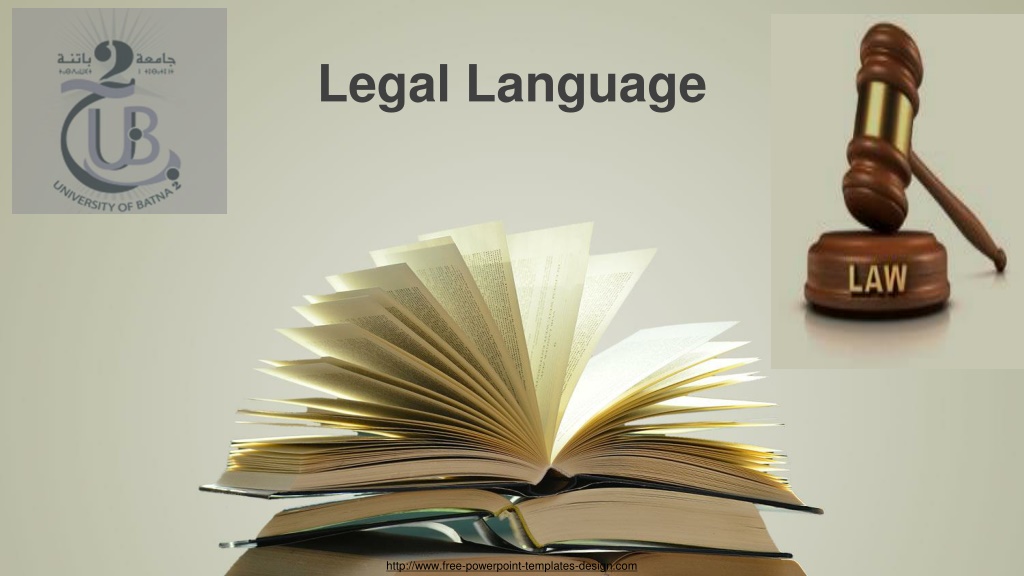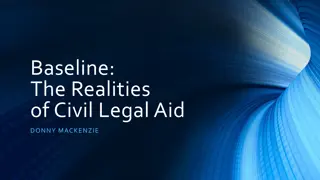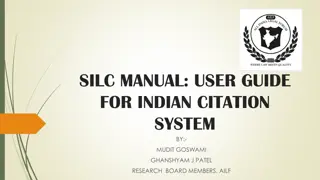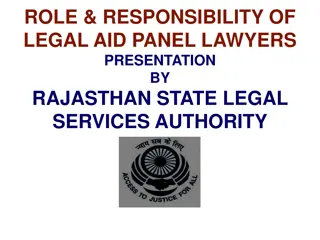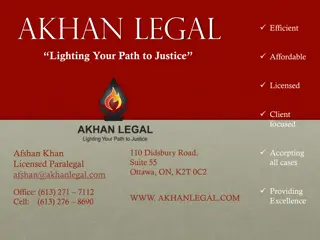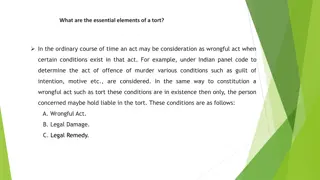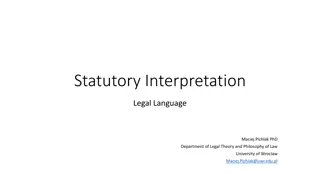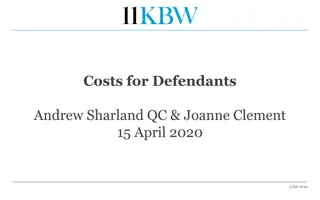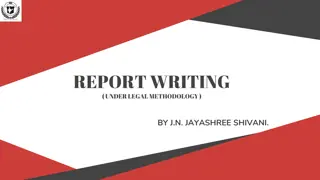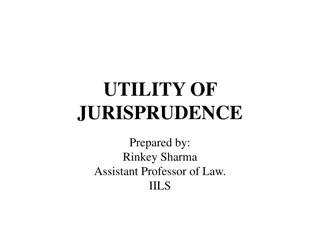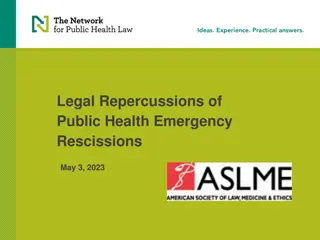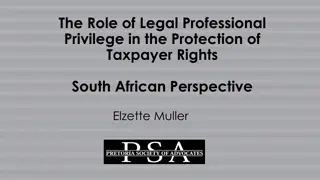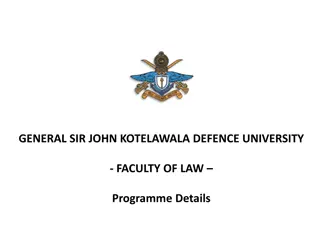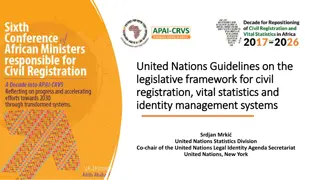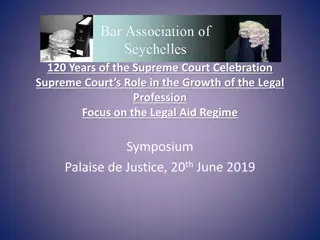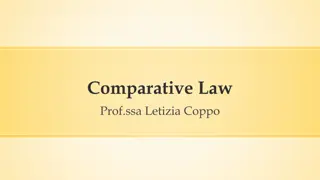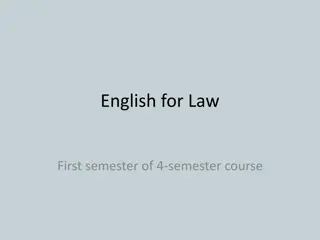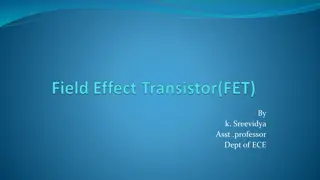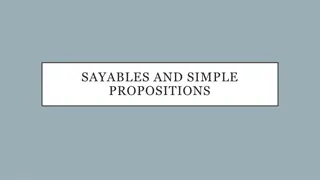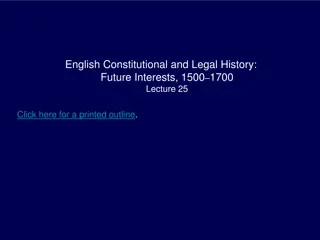Understanding Legal Language: History and Characteristics
Explore the origins and characteristics of legal language, including its specialized grammar, historical evolution from Norman conquest to modern times, common pitfalls of legalese, and the complex linguistic habits used by lawyers strategically. Gain insights into the unique vocabulary, syntax, and semantic restrictions that define legal language and distinguish it from everyday communication.
Download Presentation

Please find below an Image/Link to download the presentation.
The content on the website is provided AS IS for your information and personal use only. It may not be sold, licensed, or shared on other websites without obtaining consent from the author. Download presentation by click this link. If you encounter any issues during the download, it is possible that the publisher has removed the file from their server.
E N D
Presentation Transcript
Legal Language http://www.free-powerpoint-templates-design.com http://www.free-powerpoint-templates-design.com
Agenda What Is Legal Language? 1 Its General Characteristics 2 Historical Survey of English Legal Language(Origins) mn 3 Characteristics of Legal Language( Linguistic) 4 Terminology - Characteristics of the language of the law 5
Agenda Pitfalls of Legalese 6 Examples 2
English for Academic Legal Purposes (EALP)
What is a Legal Language? argot, a dialect Sublanguage a register a style even a separate language.
EALP A sublanguage has its own specialized grammar, a limite d subject matter, contains lexical, syntactic, and semantic restrictions, and allows "deviant" rules of grammar that are not acceptable in the standard language. However, we describe legal language as a complex collection of linguistic habits that have developed over many centuries and that lawyers have learned to use quite strategically.
Frequent use of common words with uncommon meanings Tautologies; Loan translations Use of Old English and Middle English words; French words not in the general vocabulary; Terms of art Argot Latin terms.
Historical Survey of English Legal Language(Origins) 1 England was conquered: French-speaking Normans(1066) English had for a long time been a written language used for legal and governmental purposes The Doomsday (or Domesday) Book in 1086 (11th C) 2 Acts, statutes, judicial proceedings and court decisions of England were recorded in Latin until 1731(universal and powerful language) 3 French was not used as a legal language immediately after the Norman conquest in 1066. For about the first 100 years of Norman rule, English had a good chance of holding its own. 4
1166: King Henry II passed an act known as the Assize An Assize is an ancient writ for the recovery of property. 5 Not in a church court, but in a royal court - a French- speaking court. Participants in legal matters therefore utilized all three languages - French, English and Latin - in the administration of justice. 6
In legal disputes An injured party (plaintiff) and the accused (defendant) might state their cases and bring their evidence in English The case would be argued, tried and judgment rendered in French and reported to the outside world in Latin Then, the record of the court proceedings and decision in French had to be translated back into English
As the law evolved, the language evolved, incorporating legal expressions in all three languages, all in active use. Sometimes for precision, clarity, or for emphasis and in the general bilingual fashion of the day, synonyms were joined to produce tautologies, or importan t expressions were translated directly from the Latin or French into English, producing loan translations.
Characteristics of Legal Language(Linguistic) 1. Pronunciation and Spelling as Markers of Group Cohesion: The odd pronunciation of defendant and the spelling judgment seem to serve as a marker of group cohesion The reason may be that the traditional legal pronunciation sounds unsophisticated to the modern ear, and lawyers are very concerned about appearing prestigious. 2. Lengthy and complex sentences: Sces are a bit longer than in other styles, and also have more embeddings, making them more complex.
3. Wordiness and redundancy: to use wordy and redundant phraseology, including what is sometimes called boilerplate. Lawyers also tend to use ponderous phrases (such as at slow speed or subsequent to) where a single word would suffice (slowly; after). On the other hand, sometimes legal language is not overly wordy at all, but highly compact or dense
4. Conjoined phrases: Conjoined phrases consist of words like by and and or e.g: I give, devise and bequeath the rest, residue and remainder They have been used since Anglo-Saxon times. Conjoining words is still extremely common in legal language. One reason for such lists of words is to be as comprehensive as possible. They also can add emphasis. But they can lead to ambiguity because of the rule of interpretation that every word should be given meaning and nothing treated as surplusage.
5. Unusual Sentence Structure Lawyers make use of unusual sentence structures, as in a proposal to effect with the Society an assurance, which is taken from an insurance policy. Often these unusual structures result in separating the subject from the verb, or splitting the verb complex, which can reduce comprehension. 6. Negation: Legal language seems to use an inordinate amount of negation. To some extent this may result from the tendency to regulate by prohibition; judges prefer negative injunctions, for example.
7. Impersonal Constructions legal style is impersonal constructions The best example is avoidance of first and second person expression (I and you). Using the third person in statutes does make some communicative sense Multi-judge panels seem less reluctant to use we, and will even use this pronoun to refer to a decision made by their predecessors long ago. Here, the first person stresses the continuity and perceived timelessness of the law
Terminology - Characteristics of the language of the law 1. Frequent use of common words with uncommon legal definitions Action -- law suit Alien - transfer property Instrument - legal document Letters - document authorizing one to act 3. Loan Translations 2. Tautologies breaking and entering keep and maintain deem and consider maintenance and upkeep action on the case - action sur le case against the peace -contra pacem
4. Old English and Middle English aforesaid, aforementioned and forthwith "here" words - hereafter, herein, hereof, heretofore whatsoever, whensoever, wheresoever, whosoever 5. French words not in the general vocabulary: chose in action 6. Terms of Art: Last clear chance 7. Argot: "case on all fours Blackacre / Whiteacre reasonable person
Pitfalls of Legalese General and vague terms; Semantic ambiguity; Over-specificity; Words that are obsolete in common usage, still in use in the legal language; Solemnity of form; Syntactic ambiguity; Terms giving rise to emotional effect; and Too many choices
Characteristics of Legal Language(Linguisti c) Insert the title of your subtitle Here 1 60% 40% 50% 1. Pronunciation and Sp elling as Markers of Gro up Cohesion Y Your Text Here Get a modern PowerPoint Presentation that is beautifully designed. Your Text Here Get a modern PowerPoint Presentation that is beautifully designed. Your Text Here Get a modern PowerPoint Presentation that is beautifully designed. Get a modern PowerPoint Presentation that is beautifully designed.
Examples of Legal Language 1. Initiating an action / filing a complaint: The party initiati ng the action, the plaintiff, summarizes the facts of the controversy and asserts a right. 2. Service of process: The complaint and instructions of the court are del ivered to defendant, i.e., the party named in the complaint as being responsible for the violation of the plaintiff's right. The principle object of this delivery is to give the party to whom it is addressed notice of the proceeding. This party is thus afforded an opportunity to appear before the court and be heard by the court in the defense of its person, property and rights. Proper service on the defendant of the complaint and the summons to make an appearance must be made in accordance with special procedures, in order to charge that person with notice of receiving it.
Language of Journalism
